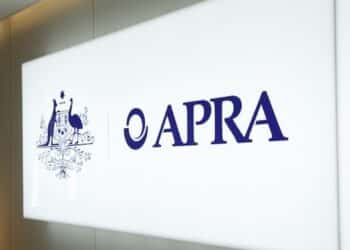The government on Tuesday morning said it will undertake a four-week targeted public consultation process on the merits of the current stamping fee exemption with listed investment companies (LICs) and listed investment trusts (LITs).
Stamping fees are an upfront one-off commission paid to financial service licensees for their role in capital raising associated with the IPOs of shares.
The government will decide whether it wants to retain, change or axe the stamping fee exemption, stating it wants to ensure investors’ interests are protected and capital markets remain efficient and competitive.
ASIC expressed concern to Treasury over conflicted remuneration surrounding listed investment companies and listed investment trusts last year.
The total capitalisation of listed investment entities is estimated to be around $41 billion, in comparison to the managed funds industry, which at 30 September had $3.87 trillion under management.
Further, a recent analysis from online investment service Stockspot estimated that investors who placed money in LICs in 2019 would have collectively seen returns higher by $1.6 billion if they had instead invested into an index-tracking ETF.
But Clime Investment Management, which has managed an LIC, Clime Capital, since 2004, has defended stamping fees, with its chief executive stating there are enough protections in place for consumers.
“The debate here seems to have quickly devolved to ‘if the conflict exists, it will be exploited’,” Rod Bristow said.
“There are various conclusions being drawn that point to the conflict being the sole reason capital has been raised. I do not believe this conclusion is accurate, or fair on financial advisers.”
He added financial advisers already have an obligation to act in their clients’ best interests.
“Consistency in application of regulation is of course preferable, but additional regulation is not the answer,” Mr Bristow said. He has insisted that existing law should be simplified rather than a new layer of regulation being created.
For listing any new investment, Mr Bristow has said the government must ensure investors receive a dollar of value for a dollar of investment on day one, that there is appropriate compensation for risk and any new issues are in compliance with current regulatory standards.
But others have begged to differ.
VanEck managing director Arian Neiron commented: “In the wake of the royal commission it is unacceptable that LICs or LITs can pay selling or stamping fees to financial advisers.”
“There are a plethora of income opportunities listed on ASX and ChiX that offer income, both passive and active strategies. From Australian corporate bonds to hybrids and subordinated debt to emerging market debt.
“Assessing the total cost of investing is a must for any consideration for any investor. ETFs do not pay any stamping fees and with the Australian ETP [exchange-traded product] market at a record $62 billion, it is set to grow even more this year.”
VanEck has also freshly launched its first active ETF to the Australian market.
The Financial Planning Association (FPA) likewise has said it continues to support the removal of non-client-directed fees in all financial advice services, in the interests of unconflicted advice.
FPA chief executive Dante De Gori noted the association’s members receive on average around 8 per cent of their total revenue from investment commissions, with the majority being phased out by next year when grandfathered commissions will cease.
“At this point in Australia, all other forms of product-directed payments that a financial adviser receives from clients, have been banned, leaving most financial planners only receiving fee-for-service payments,” Mr De Gori said.
“Between 2009 and 2012, all of our members transitioned away from these payments to ensure that clients are receiving unconflicted advice.”
Trading at a discount to total assets
Most LICs and LITs are said to trade at discounts to their net tangible assets (NTA) post listing.
Mr Bristow commented in part, the costs associated with listing are bourne by the manager at the expense of the investor, calling it “an undesirable structure”. He reported however it has been addressed in recent listings such as those completed by Magellan and VGI Capital Partners.
“Part of this is also the requirement for secondary market support to ensure new investors are made aware of the product and its benefits,” he said.
“Similar to newly listed entities of any sort, there is a requirement for the listed entity to hold requisite capability in managing a diverse shareholder base and keeping that base adequately informed to ensure the market in its securities is efficient.
“This should not be underestimated in terms of the expertise and costs required, ultimately having an impact on the LIC/LIT trading close to or above NTA.”
But Mr Neiron commented that investors want liquidity, transparency and to be able to trade close to the net asset value (NAV).
Mr Bristow added it would be useful to consider the performance of unlisted managed funds during the last five years, to compare how they’ve performed against their objectives and LICs issued during the same period.
“While of course the unlisted structure will be trading at NAV, the performance figures could be instructive,” he said.







